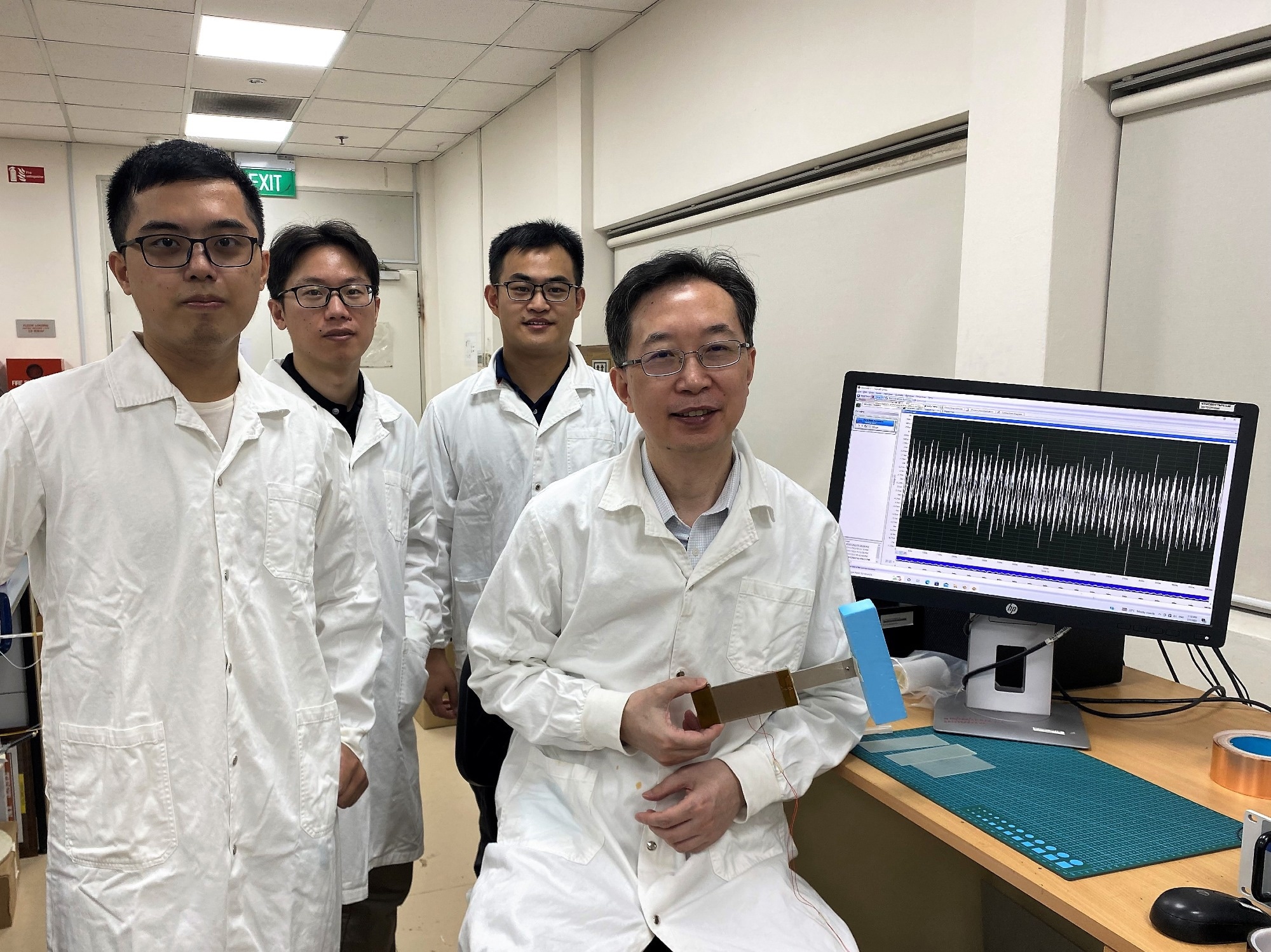Reviewed by Alex SmithOct 6 2022
Nanyang Technological University researchers (NTU Singapore) have developed a low-cost device that can harness and store wind energy as benign as a light breeze.
 (L-R) Mr. Liu Zicheng, Ph.D. student from NTU’s School of Civil and Environmental Engineering (CEE), Dr. Hu Guobiao, Research Fellow from NTU’s CEE, Mr. Zhao Chaoyang, Research Associate from NTU’s CEE, and Professor Yang Yaowen, Associate Chair (Faculty) of NTU’s CEE. Image Credit: Nanyang Technological University.
(L-R) Mr. Liu Zicheng, Ph.D. student from NTU’s School of Civil and Environmental Engineering (CEE), Dr. Hu Guobiao, Research Fellow from NTU’s CEE, Mr. Zhao Chaoyang, Research Associate from NTU’s CEE, and Professor Yang Yaowen, Associate Chair (Faculty) of NTU’s CEE. Image Credit: Nanyang Technological University.
The device may generate up to 290 microwatts of electricity and a voltage of 3 volts when exposed to winds as little as 2 meters per second (m/s), which is sufficient to power a commercial sensor device and transmit data to a smartphone or PC.
The portable, durable wind harvester also directs any excess energy to a battery so that it can be stored and utilized to power devices when there is no wind.
According to the researchers, their technology has the ability to replace batteries in light-emitting diode (LED) lights and structural health monitoring sensors. These are used on urban structures like bridges and skyscrapers to track structural health and warn engineers about problems like instabilities or physical damage.
The device, which measures about 15 cm by 20 cm, can be easily fixed on the sides of buildings and would be perfect for urban situations like Singaporean suburbs, where average wind speeds are less than 2.5 m/s outside of thunderstorms.
The observations were published in the scientific peer-reviewed journal Mechanical Systems and Signal Processing.
As a renewable and clean energy source, wind power generation has attracted extensive research attention. Our research aims to tackle the lack of a small-scale energy harvester for more targeted functions, such as to power smaller sensors and electronic devices.
Yang Yaowen, Professor, Structural Engineer, School of Civil and Environmental Engineering, Nanyang Technological University
Yang Yaowen, who headed the project, adds, “The device we developed also serves as a potential alternative to smaller lithium-ion batteries, as our wind harvester is self-sufficient and would only require occasional maintenance, and does not use heavy metals, which if not disposed of properly, could cause environmental problems.”
The industry has expressed interest in the idea. The NTU study team is also attempting to commercialize their creation.
The study demonstrates NTU’s dedication to reducing the impact on the environment, one of four grand challenges facing humanity that the University seeks to address through its NTU 2025 strategic plan. The innovation presented in the study could help reduce electronic waste and find alternative energy sources.
Riding the Wind
The device was created to capture effective wind energy at a low cost and with minimal wear and tear. Its body is constructed of fiber epoxy, an extremely durable polymer, with the main attachment consisting of affordable materials such as copper, aluminum foil, and polytetrafluoroethylene, a durable polymer also known as Teflon.
When the harvester is subjected to wind flow, its dynamic design causes it to vibrate, forcing its plate to approach and leave the stopper. Charges build on the film as a result, and an electrical current forms when they pass from the aluminum foil to the copper film.
In lab tests, the NTU-developed harvester continuously powered 40 LEDs at a wind speed of 4 m/s. It could also activate a sensor device and power it adequately to wirelessly transmit room temperature data to a mobile phone.
This proved that the harvester could not only create enough electricity to operate a device on a constant basis, but it could also store enough charge to keep the device powered for a prolonged period of time in the absence of wind.
Wind energy is a source of renewable energy. It does not contaminate, it is inexhaustible and reduces the use of fossil fuels, which are the origin of greenhouse gasses that cause global warming. Our invention has been shown to effectively harness this sustainable source of energy to charge batteries and light LEDs, demonstrating its potential as an energy generator to power the next generation of electronics, which are smaller in size and require less power.
Yang Yaowen, Professor, Structural Engineer, School of Civil and Environmental Engineering, Nanyang Technological University
The NTU researchers intend to conduct additional research to enhance their device’s energy storage functions, as well as experiment with alternative materials to increase its output power. The research team is also in the process of applying for a patent with NTUitive, NTU’s innovation and enterprise company.
Journal Reference:
Zhao, C., et al. (2022) A cantilever-type vibro-impact triboelectric energy harvester for wind energy harvesting. Mechanical Systems and Signal Processing. doi.org/10.1016/j.ymssp.2022.109185.